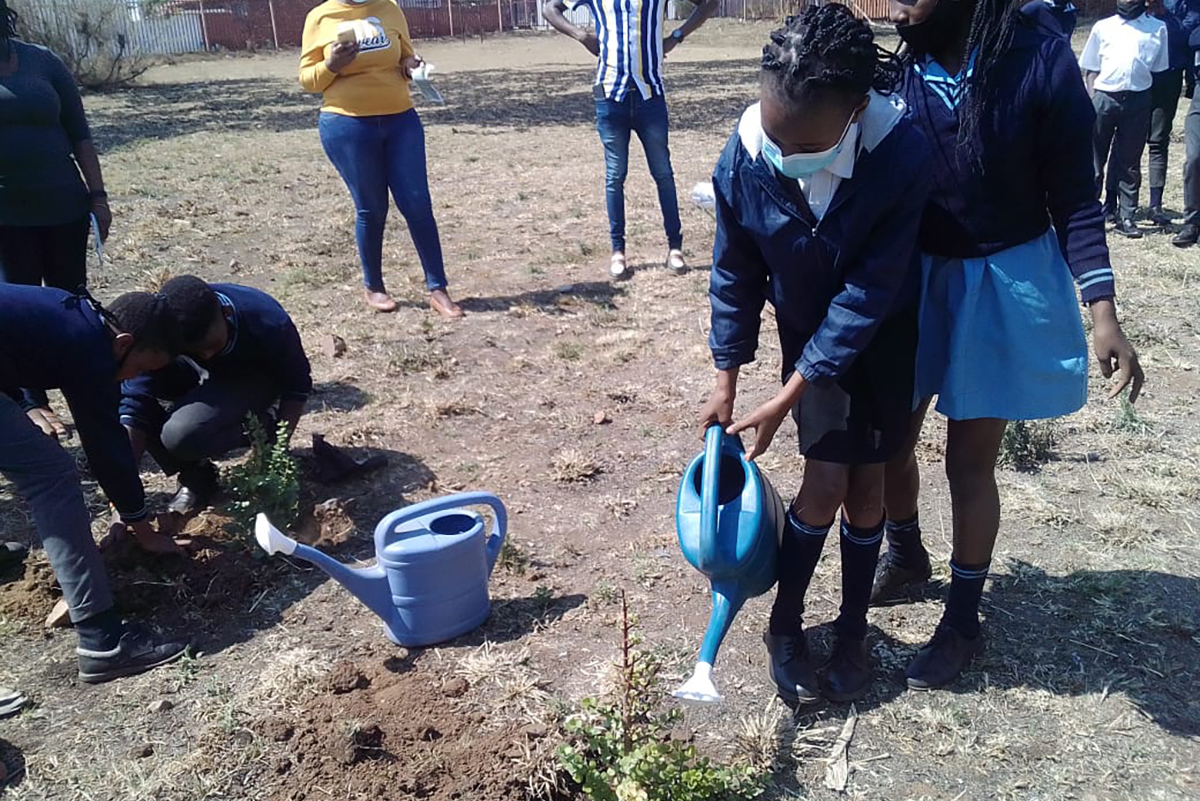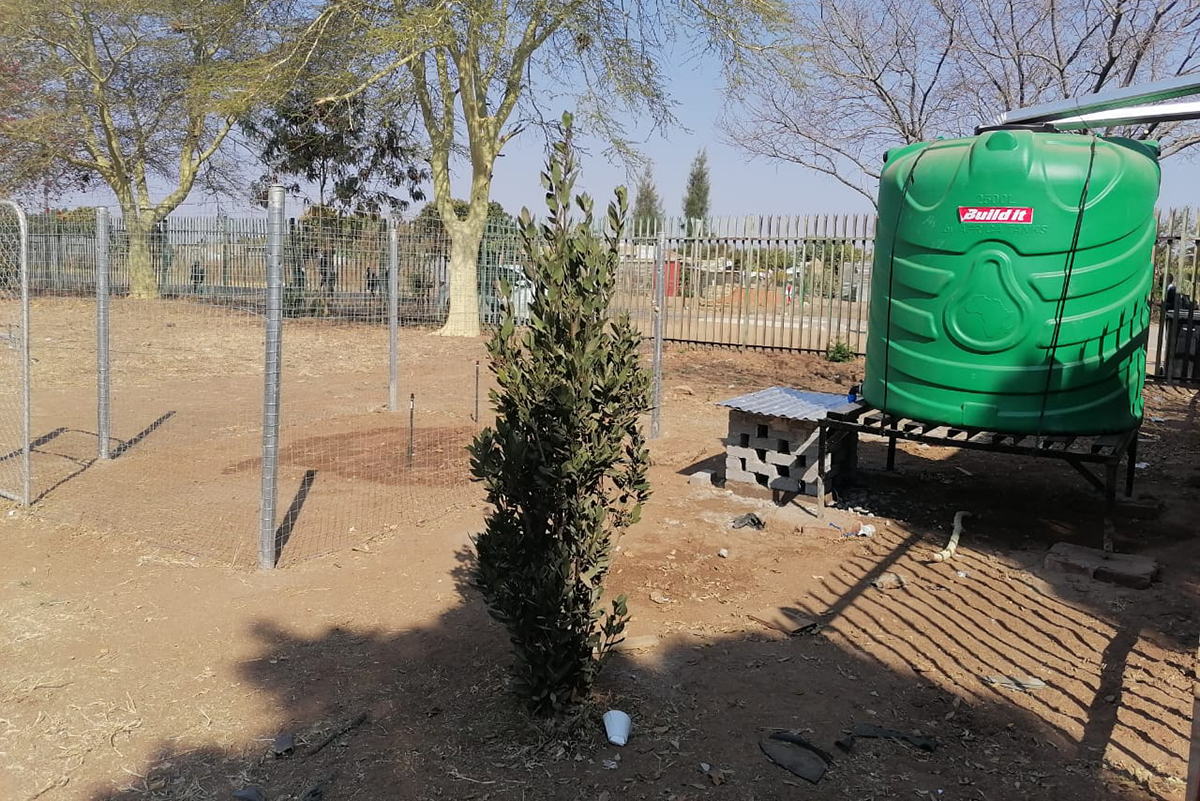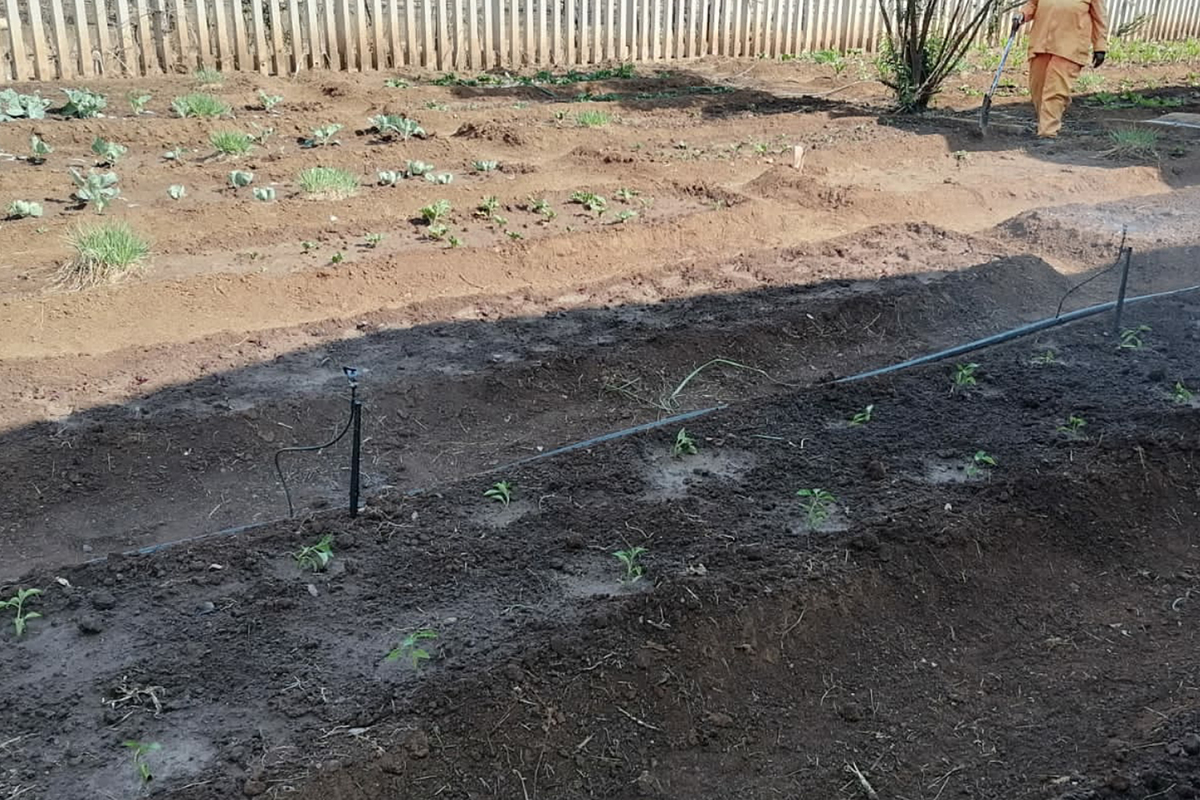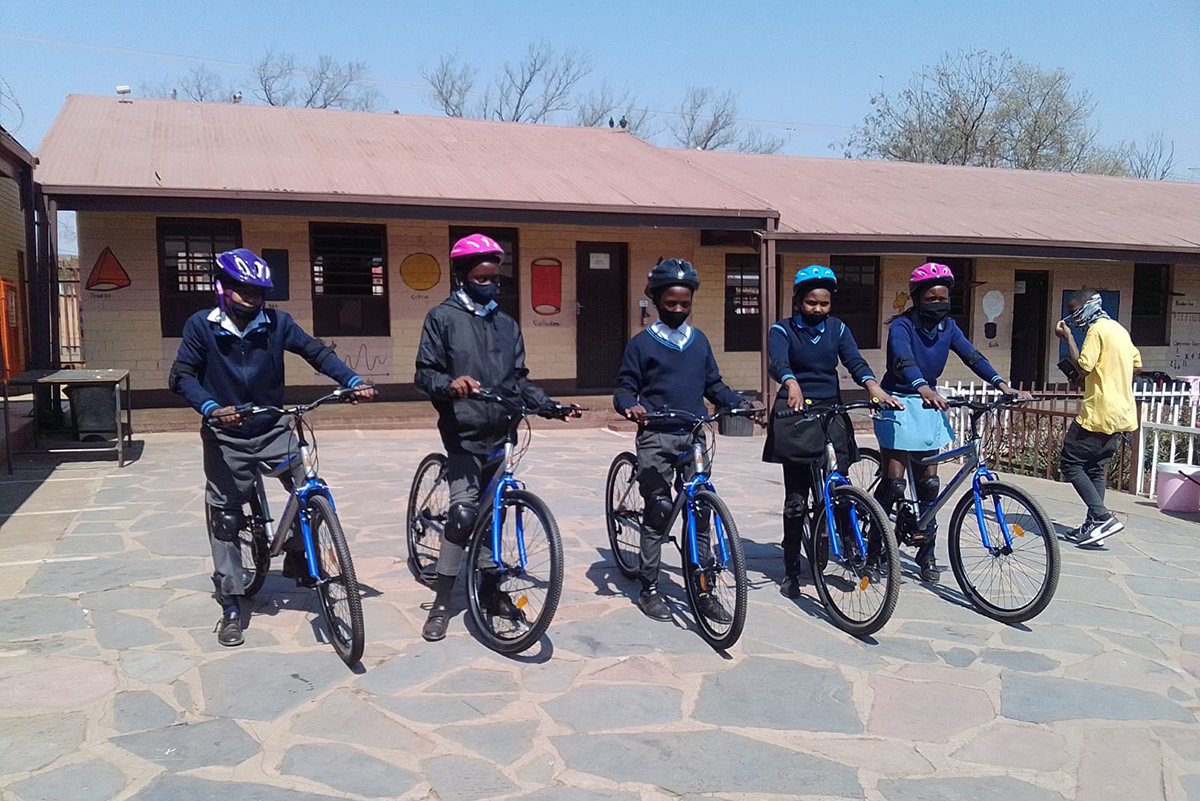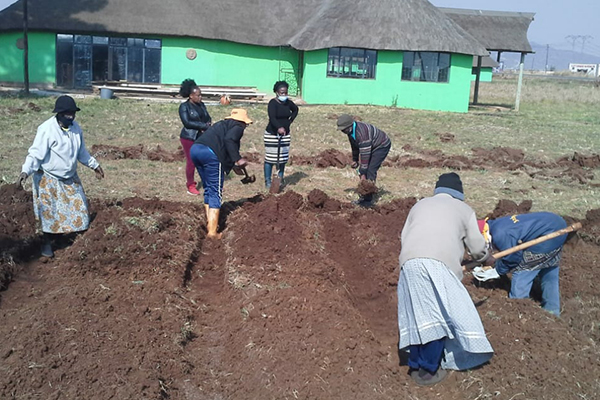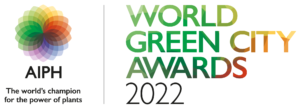Addressing the urban challenge
Breadth of the issue – How are the problem(s) that are being tackled by your initiative affecting citizens/local businesses or a significant component of the local wildlife?
The limited knowledge about the climate change is now becoming a great issue because the citizens are following the behavioural patterns which continue to compromise the environment. The increased carbon emission has changed the weather patterns to extent that Tshwane also experiences the extreme temperatures. This seriously affects the aging infrastructure in the case of heavy storms and the quality of the food products during extreme heat and cold conditions. Planting trees and developing garden are the localized adaptive measures on which communities needs to be capacitated on. The problem of water scarcity which is affecting the broader scale of the communities requires more lessons on the water harvesting and conservation aspect. Waste recycling is an intervention which has a potential of strengthening the local economy whilst improving the environment and contributes towards the behavioural change towards nature care.
Depth of the issue – How seriously are the problems being tackled by your initiative impacting the life of the citizens/businesses/wildlife concerned?
This program addresses several interventions which seriously impact the life of the citizens. The tree planting activity will reduce the carbon emission and improves the environmental view. The issue of the cleaning of the illegal dumping spots will improve the neighbourhood and encourages the community collaborations in tackling the local issues. Active mobility from a young age will contribute towards shaping the future with leadership who are well informed of the environmental importance. This also involves the education and awareness in schools will ensure that there are knowledgeable leaders about climate change and environmental managements.
The power of plants and natural ecosystems to deliver benefits
How is the initiative shaped by scientific evidence of the potential for plants and natural ecosystems to deliver benefits?
Tree planting activity is encouraged because the tress has the potential of absorbing the carbon monoxide in the air. In that way it will reduce the carbon emission in the atmosphere. The trees also have the potential of making the environment to look natural, green, and lively.
How has the city exploited the potential of plants and associated ecosystems to deliver more than one benefit?
The planting of Speekboom as known locally was prioritized because it doesn’t require lot of water and can withstand all the weather patterns. It has longevity in its nature.
Innovative and Collaborative Solution
How does the initiative show evidence of feasibility, including on-going financial and logistical support?
Though the program was only meant to be for the pilot purposes, the NPO are provided support to continue with the activities if resources allowed. The city is enhancing on profiling the NPO to be linked to other stakeholders who are in the field.
In what ways is the initiative innovative?
The city has never partnered with the local NPO to drive the climate change program. According to Diffusion of Innovation theory by Rogers an innovation is when the new solution or idea or practice as identified by the individual or organization is introduced or integrated in an organization. Partnering with local NPO has never been a practice in City of Tshwane at the scale at this this program was pitched. Climate change has always been addressed at a high strategic level engagement of the city without going straight to the local communities.
How is the initiative supported by collaborative working across disciplines and sectors?
The identified project deliverables are based on various thematic areas. As such it has led to the establishment of a multi-sectoral partnership within and outside the city. In this program Social development Through the city social workers played a crucial role as the experts working mostly with NPO ; The Department of Roads and Transport together with the Metro Police were involved to train the NPO to be able to train leaner to ride a bicycle and promote NMT ; Department of economic Development was supporting the NPO to economic factors especially when they have to engage the local recyclers about the recyclables ; The NPO themselves were mostly operating from other programs which are not climate change related ; Department of Education through the schools had to experience a comprehensive approach of delivering the climate change activities.
How does the initiative demonstrate evidence of community support?
The attendance of the communities to the cleaning campaign and the voluntary participation of the households to the home garden is the illustration of the community acceptance to the program. The program was also embraced by the schools which led to several request by other schools who are not in the program.
Implementation, Impact and Replicability
How does the initiative demonstrate evidence of a track record of success against pursued objectives?
Each of the 40 schools have received and planted 5 or more trees.
Each of the 40 schools have developed a secured recycling corner with 2 big recycling bins which are properly labelled according to the waste stream.
More than 150 households within the city were assisted to initiate household garden with two crops.
More than 20 school learners of each school were provided with the training to ride a bicycle.
More than 200 bicycles were provided to schools to continue with the training of the leaners.
More than 10 water tanks were installed amongst the schools connected to the roof structure and the irrigation systems.
Cleaning campaigns have arranged in different areas to clean an illegal dumping spot.
How has the initiative had a ripple effect beyond the scope of the initiative itself, thereby demonstrating a change in the city’s and/or its partners’ way of working with plants?
The program was presented in various platforms as a case study shared to other municipalities. The program has immensely benefited the selected school never had a bicycle training program for the learners, water harvesting concepts applied at school, school garden etc.
How have other cities expressed interest in the initiative, or what potential does it have to interest other cities and be customised to their own circumstances?
Most of the cities struggling to infiltrate the climate change and environmental programs to the local community level. This program is seen as a simple alternative to be applied to ensure the localized presence of the technical problems like climate change.
Sustainability and Resilience
What efforts have been made to reduce the carbon footprint of the initiative?
This program is a pilot which is regarded as a lesson to include the reduction of the carbo footprint. The intention is to ensure that in future the NPO will be encouraged to the collective procurement which will allow of once off delivery to avoid the frequent travel for delivery purpose. The identified project deliverables on their own are an illustration of the reduction of the carbon footprint. These are the water harvesting concept, waste recycling, tree planting, home gardening, active mobility through cycling, awareness and education on issues relating to climate change and environmental management.
How have the anticipated impacts of climate change been considered?
During the conceptualization, the intention was to come up with project deliverables which will specifically have the impacts of the climate change. On the tree planting activity, the selection of the spekboom (Portulacaria afra) was intentional because this tree has a huge capacity to offset harmful carbon emissions whereby it absorbs around 4-10 tons of carbon per hectare. Again, the tree can improve the quality of the air we are breathing because it has the ability of removing the carbon dioxide from the atmosphere by acting like the carbon sponge. It is easy to grow, water wise and super resilient in which it adapts to all the weather conditions. It is an excellent soil binding pant which prevents the soil erosion.
The development of both home and school garden was intended to encourage the homes grown food to reduce the food security. The water harvesting concepts encourages the utilization of the natural rainwater to relive the municipal system to focus only on the water for human consumption.
What processes does the initiative include for it to be considerate in its use of soils and other natural resources?
The planting of the spekboom tree was to ensure that the issue of soil erosion is also considered since the spekboom has the ability of excellent soil binding element that prevents soil erosion. During the gardening of both school and households the usage of the homemade or organic fertilisers was encouraged
Monitoring, Maintenance, and Management
How has the initiative been designed and implemented so that long-term needs for management and maintenance are reduced and can be met?
The identified deliverables will at the later stage ensure that through recycling the waste is diverted from landfill site and the life span of the landfill are increased. The water harvesting concepts will gradually reduce the dependence on the municipal water reserves which are already at its lowest point and encourage water conservation ; the active mobility will reduce the number of the cars which will ultimately reduce the traffic congestion which contributes towards the increased carbon emissions ; the issue of the food security will gradually be addressed by the home grown vegetables ; constant education and awareness will increase the citizen activists on the climate change and environmental related issues.
What protocols are in place to facilitate monitoring of results?
In the city`s side the program was led by two key units of City sustainability and environmental education. The Performance and monitoring team was assembled to provide support to the NPO during the program. The team had to ensure that they keep a clear look of the activities as they unfold. guides and support the NPO -There is a special contact person for the activity of training of the bicycles; recycling activity; school and household garden; water harvesting, education, and awareness. This is in addition to the P&E team who are used as the overall in providing oversight. The NPO were requested to provide written monthly report who were consolidated to have an overall report. The site inspection with all the stakeholders was also arranged by the multi team of stakeholder to go and physically see the progress.
How has the initiative been enhanced in response to monitoring of results?
The project has created and led to the city sustainability unity to create a closer interaction direct to the community through NPO and to instil the culture of the direct community interaction. It has also increased the knowledge on the importance of the constant interaction with the implementing agency.
















